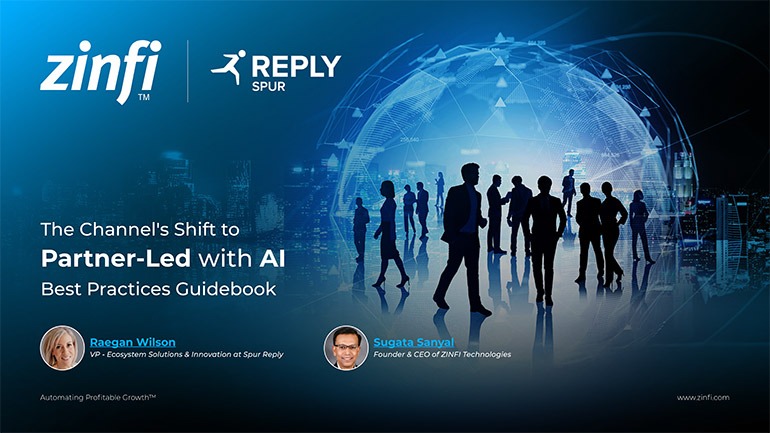Best Practices Articles

Redefining Channel Management Through A Unified Lens
We‘ve already explored in multiple earlier articles the complexity of channel management. It is even more complex for companies that are selling globally, because there is tremendous variability in requirements and parameters from region to region. We’ve also written about how global market requirements can have a tremendous impact on channel policies and programs, and on how a company goes to market. In this article we will explore how a unified approach to channel management can greatly improve channel performance.
Before we delve into the solutions, however, let’s talk a bit about the sources of complexity in channel management, particularly on in the global context. First of all, a channel management infrastructure needs to account for different types of partners—whether they are alliance partners, go-to-market partners, solutions and services partners, or training partners—and how they form different parts of the ecosystem. Channel management needs to address the unique requirements of these different partner types. It also needs to take into variations in market and industry requirements, which depends in part on whether the vendor operates in a business-to-business (B2B) or a business-to-consumer (B2C) environment.
We also know that markets vary considerably by country. For example banking, finance and insurance are industries that are highly variable by geography, depending on the maturity of the country as well as local laws. Similar dynamics are at play in healthcare, education, government and other verticals in the B2B space. When a vendor is selling to consumers, channel management tends to be a bit more horizontal across countries and regions. However, there are big differences between developed countries and developing countries in terms of how B2C channels are managed.
Finally, the constant changes and evolution in products, services and solutions introduce still more complexities for channel management. For example, when a specific product like shampoo is rolled out globally, requiring significant localization of marketing and messaging, the approach is going to differ substantially from the approach required for high-tech products like manufacturing devices or network components or software, which are sold to businesses and marketed in a way that typically requires less localization. Differences like these have an impact on the level of information that needs to flow through the channel and the complexity of managing the channel as you pursue channel marketing goals and initiatives.
So, I hope you can begin to see that one of the most important steps in establishing a unified approach to channel management is to take a broad, longer-term view. “Rome was not built in a day” may be a cliché, but it expresses a particularly apt principle for channel management. To be truly successful in channel management, you need to have an overarching business strategy in place. One of the first things a company needs to decide is whether they are going to market directly to end users or via the channel. Most companies that sell consumer products market, by default, through some sort of distributor network. But even then they need to decide whether they are going to sell through franchises (e.g., Burger King or McDonald’s) or sell directly through captive outlets (e.g., Starbucks). The same kinds of considerations apply when selling complex solutions through the channel, especially in the technology segment. The direct vs. channel discussion needs to be clear and upfront from the beginning, and then the strategy needs to be communicated repeatedly to the channel partners. Otherwise, they may feel their business is being undercut by the company. This is why, for example, high-value products like the Apple products are generally sold directly to consumers through Apple retail stores. When they are sold through channel partners the products are rarely discounted to eliminate any pricing conflict or share-shifting.
The same kinds of discussions take place in other industries. Companies have to decide whether to sell via open channels or closed channels. Whether the industry is insurance or real estate or banking or high-tech products, at some point specialty capabilities may be required on the reseller side, such as initial certification or additional investments on the partner side, and in cases like these partners may require assurances from the vendor that they won’t make the products or services available to everybody and ensure there’s enough business available to a specific channel partner so they can break even on their investment costs. That’s why the open channel vs. closed channel discussion must be thought through and discussed in a very clear way.
Once a company has established a high-level channel policy and a distribution strategy, the next step is to think about the people structure, because at the end of the day companies do not do business with companies; people do. That’s one reason it’s so important to set up the right channel infrastructure—to make sure that high-volume partners who play a very important role have high touch, but at the same time ensure that partners who do not sell a lot do not feel left out. This is where organizing your channel management infrastructure is critical to make sure all partners not only feel valued and important but also get the level of support that’s appropriate to their profile. From the company side, you need to ensure the channel management infrastructure is not cost-prohibitive but can actually drive growth and scalability.
A third important consideration in establishing a unified approach to channel management is process. When a partner is onboarded and has access to contracts, training modules, incentives, etc.—all those processes need to be clearly defined in advance, and they should be different for partners who have been doing business with the company for a long time. Processes related to deal registration and protection are incredibly important in the case of high-value deals where partners need to be sure there is no over-distribution of solutions to the channel and so they don’t end up fighting among themselves over price and losing collectively against other competitor solutions and products. Also, from an overall process perspective, both marketing and sales teams need to make sure that partners can differentiate from each other—a requirement that, by the way, extends to the solution structure itself. Often, vendors put programs together which are mass-distributed and don’t provide specific partners or partner types with the opportunity to rise to the top, and that can result in some partners disengaging and guarantee the failure of certain channel initiatives.
These leads to my fourth consideration in establishing a unified partner management approach: programs. Companies can drive channel performance based on several factors. First of all, programs that are rolled out need to be closely aligned with partner competency. A partner that has just signed up with company may not be eligible to sell certain kinds of products and services, whether B2B or B2C. There also needs to be close alignment with the partner business model. Pushing incentives programs that aren’t aligned with a partner’s sales and marketing focus may completely waste channel management resources behind programs that don’t yield any results. The company’s rewards structure needs to be carefully thought through. Rewarding a specific high-volume partner through back-end rebates or additional support mechanisms should be a very different process from setting up programs that drive individual sales rewards where each sales person can be motivated with specific incentives and rewards that will drive transactions. This latter approach tends to work well on transactional products where a salesperson does not need to rely on multiple functions to pull solutions together. However, if a program is rolled out and tied to an individual reward, but the salesperson is heavily dependent on the vendor’s marketing or technical or support infrastructure, that company or program can fail completely just because it wasn’t thought through properly.
A final consideration in putting together a unified channel management approach is technology, which is obviously extremely important. In fact, at ZINFI we have coined the term “unified channel management” in part to highlight three interrelated core elements of our channel management technology: 1) partner relationship management, 2) channel marketing management and 3) channel sales management. With partner relationship management, the primary focus is on how the vendor interacts with and manages the partner—signing agreements with the partner, getting them trained, providing incentives, managing performance based on several specific criteria, all at a holistic level. Channel marketing management, on the other hand, is about enabling partners to go drive demand on their own leveraging marketing assets, sales programs, product initiatives and the like. Channel sales management applies mostly to enterprise-level sales, where people are actually trained through a multi-month, complex sales cycle using a step-by-step approach designed to ensure participants aren’t overwhelmed by superfluous sales and marketing tools. From a technology platform perspective, it is incredibly important—whether we are thinking about partner relationship management, channel marketing management or channel sales management—to make sure all of these elements, individually or collectively, come with a set of business analytics tools for channel management. These tools allow the channel management team to slice and dice the data in various ways to gain insights into what is really going on, to understand what’s working and what isn’t, and to be able to actions based on that information.
If we step back and look at all of the things we need to consider and think through in order for channel management to excel, we might be justified in wondering how the channel actually works today. Well, the truth of the matter is that for many organizations it doesn’t work nearly as well as it should. However, where there is proper alignment of channel policies, people, process, programs and platform, it is certainly possible to look at channel management through a unified lens of high performance, and drive growth at a lower cost in a global context.
Best Practices Guidebook
 Modernizing Channel Marketing: AI and Ecosystem Enablement Best Practices
Modernizing Channel Marketing: AI and Ecosystem Enablement Best PracticesDownload for FREE
 The Channel’s Shift to Partner-Led With AI Best Practices
The Channel’s Shift to Partner-Led With AI Best PracticesDownload for FREE
 Hyperscalers, ISVs, and AI: Shaping the Future of B2B Software Distribution
Hyperscalers, ISVs, and AI: Shaping the Future of B2B Software DistributionDownload for FREE
 Definitive Guide to a Partner Ecosystem-First Sales Strategy
Definitive Guide to a Partner Ecosystem-First Sales StrategyDownload for FREE
 The Partner-Led Digital and AI Transformation Best Practices
The Partner-Led Digital and AI Transformation Best PracticesDownload for FREE
 Startup Talent Recruitment: Hiring Missionaries, Not Mercenaries
Startup Talent Recruitment: Hiring Missionaries, Not MercenariesDownload for FREE
 The Future of Partner Relationship Management with AI in Partnerships
The Future of Partner Relationship Management with AI in PartnershipsDownload for FREE
 Cybersecurity for the 99%: Strategies from the Frontline
Cybersecurity for the 99%: Strategies from the FrontlineDownload for FREE
 Mastering Partner Relationships: A Strategic Approach to Business Growth
Mastering Partner Relationships: A Strategic Approach to Business GrowthDownload for FREE
 Mastering Partner Relationship Management: Keys to SaaS Channel Success
Mastering Partner Relationship Management: Keys to SaaS Channel SuccessDownload for FREE
 Navigating the AI Revolution: Guide for Partners in the Microsoft Ecosystem
Navigating the AI Revolution: Guide for Partners in the Microsoft EcosystemDownload for FREE
 Mastering the Modern Buyers Journey: Sales Leader’s Guide to AI & Engagement
Mastering the Modern Buyers Journey: Sales Leader’s Guide to AI & EngagementDownload for FREE










